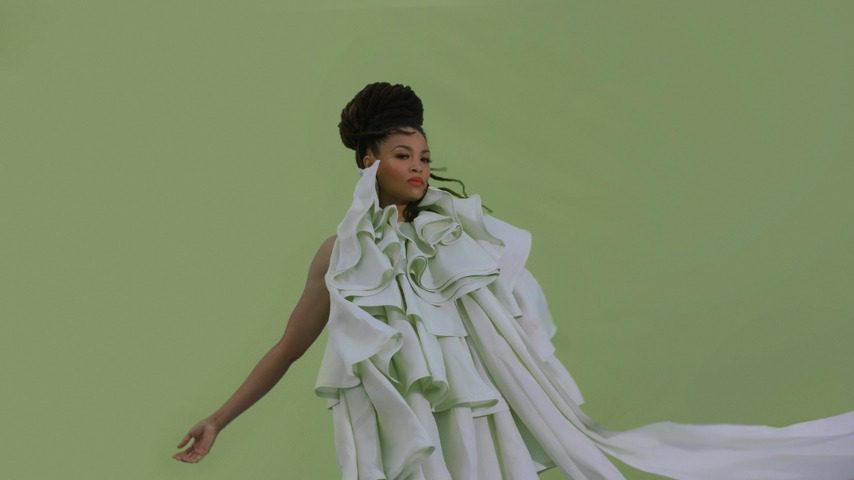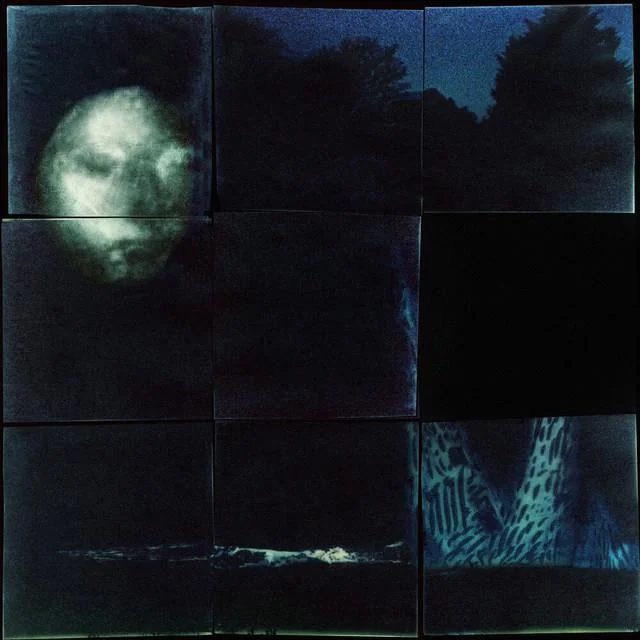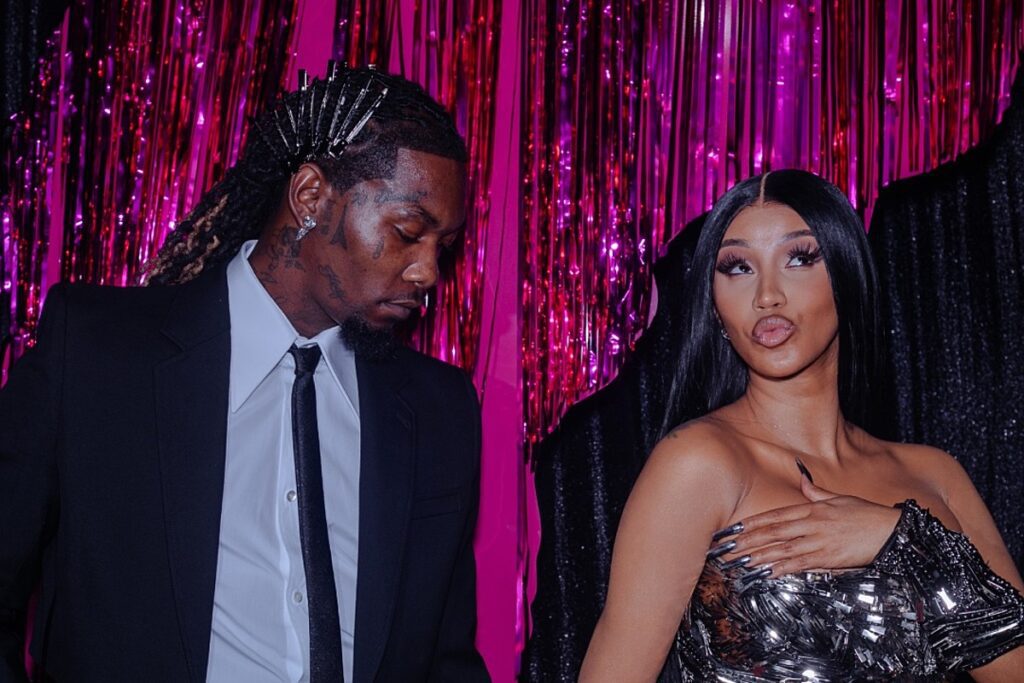Valerie June’s terrific new album, The Moon and Stars: Prescriptions for Dreamers, opens with echoing, broken acoustic-piano chords—the sound of a small, wooden, Southern church. June soon enters with her acoustic guitar, singing in her twangy soprano, “I don’t know how long I’ll stay / No, I can’t tell you lies that way.” Is she singing to a lover about the uncertain duration of their relationship? Is she singing to a congregation about the uncertain duration of her time on Earth? It works either way, especially when she adds, “I’ve had not one regret.”
This is the traditional, acoustic music of rural Afro-America, the tonality that first made June’s reputation back in 2013, when Pushin’ Against a Stone became her first nationally distributed album. She has put that style to her own uses, with quirky original songs, but that sound, which cuts against the grain of this century’s urban, microchip Black music, has given her a distinct identity.
It’s still there on The Moon and the Stars but June and her co-producer Jack Splash have found a way to build a new sound atop the old one, giving her a new future without discarding her past. This is artistic evolution not by substitution but by addition—always the better approach.
On that opening song, “Stay,” for example, the old-fashioned opening is bolstered by drums and bass on the second chorus, further reinforced by electric guitar and electric keys on the next verse. By the third chorus, the subliminal string quartet steps forward in a swelling chart by legendary Stax Records arranger Lester Snell. By the time the flute improvising over the drummer’s march beat leads into a crescendo of female vocals (all multi-tracked by June), what once seemed intimate and personal has become large and social.
“I wanted that sense that at first this is just Valerie singing about her love, her life,” June says over Zoom from her home in Brooklyn. “But as it goes on, it becomes a song about a whole town, a multiplicity of happenings that we’re all a part of. I wanted the songs to be like an art installation where you walk into a room, and you’re part of it, you can sit and look or you can dance around. That’s what I wanted where you could have a variety of perspectives.”
Most of the songs follow the same strategy. They begin with just the singer and her banjo, her acoustic guitar and/or one other ingredient. Only gradually are the other elements placed on top. As the music swells with slowly accumulating sound into a massed cloud of notes, just when you might forget where June started from, the new layers suddenly evaporate and reveal that the artist we’ve always known is still there at the heart of the song.
As a result, each song achieves what music always wants to do and too rarely accomplishes: It gives us both the individual experience—the lone voice with its distinct point of view—and the communal experience—the surrogate voice for each of us and our shared history. More than that, it reveals how the former evolves into the latter.
“These arrangements reflect the way I write songs,” she reveals. “They come quietly like that, and I’ll hear the song as just my voice. Then I’ll hear a second voice that I can add as guitar or banjo. Then I’ll hear another voice that might be a bass or a drum. Then I’ll hear a voice that can be a harmony vocal.
“Once the first voice comes, five million more voices come after them. Even after the song has already been recorded, I’ll hear new voices I could add. Like today, I was driving to the garden stand and I heard more voices I could add to ‘Stardust Scattering.’ But I can’t use them all. I have to leave room for every person who’s listening to add his or her voice.”
June is not a virtuous instrumentalist; she admits that she has trouble clapping on the beat and finding a harmony note. Her great gift is her voice, a wiry soprano to which she can add or subtract nasality to amplify any and every emotion. Part of that gift is the ability to invent striking melodic pathways for that voice to follow—and then additional routes for the other voices ricocheting in her head.
“My parents took me to a church that didn’t have instruments,” she explains, “and I heard 500 voices. I still hear 500 voices in my head. When I try to organize them, that’s hard, because my voice is so wild.”
To organize those voices, June needs the right producer. For Pushin’ Against a Stone, that was The Black Keys’ Dan Auerbach. For 2017’s The Order of Time, she borrowed Norah Jones’s Matt Marinelli. For this new album, she interviewed a lot of producers before settling on Splash.
“Yeah, they’re basic folk songs when I write them,” June says, “but I’ve always heard more. I’ve always thought that if I could get the right musicians, the right producer, the right budget, I could have more dimensions and go to other galaxies. When I took a tour of potential producers, Jack was already there. I went out to Jack’s studio in California, and we talked so much about art, music, politics, and before I left, he gave me a book of poetry by Sun Ra. I knew if I made an album with Jack, I’d not only make music, but I’d also make a friend.”
Splash—who has also produced Kendrick Lamar, CeeLo Green and Anthony Hamilton—created lattice-like arrangements that expanded on June’s initial ideas but still left enough holes that the listener can still hear the folk simplicity at the core of each song. On “Smile,” Splash creates a minimalist drum loop, relaxed bass and chiming bells to complement June’s laidback murmur that claims, in the midst of all her troubles, “All I could do was smile.” At first, this is just a personal confession, a bit of personal advice sung quietly to a friend nearby.
But as the song progresses, Splash adds crisper snare and bass notes, and June’s voice rises in response. By the time the horns, strings and multi-tracked vocals have been added, this is no longer a personal conversation; it’s advice for a whole society. “You’ll get knocked down,” she cries, “but that’s how you grow. All I could do is smile.” And this time, the “do” in that phrase is stretched out over three ascending notes. But on the bridge, all the added elements suddenly vanish, and June is once again a lone folk singer who’s “counting on you to shine.”
“Jack was brilliant at translating my voices into instruments,” she says. “I might hum a part, and Jack would say, ‘Let’s give that one to Lester.’ Or he might say, ‘Let’s give that voice to the horns.’ Sometimes I’ll be in a room with an instrumentalist, and they’ll try something. I’ll say, ‘No, not that one.’ They’ll try something else, and I’ll say, ‘No, not that one.’ Finally they’ll play something, and I’ll say, ‘Yes, that’s it. Perfect match.’ And I’ll put it in its place like a puzzle piece.”
For June, it wasn’t enough to connect her personal past to her musical future; it was also necessary to connect the past of African-American music to its future.
“It’s not just about me,” she adds. “I’m here to open a door and remind everyone that Black people don’t have to sound just one way; we sound so many different ways. I saw the Tina Turner documentary recently, and I was struck by how Black radio would only accept certain kinds of music from her. We don’t have to stay in a lane; we should be accepted for what we are: amazing, whimsical people. We know we can do it, because Tina, Mavis and Carla have opened the doors for us, so we have to open the doors for those who come later.”
Here June is referring to Carla Thomas, who had 10 top-20 R&B singles between 1960 and 1969. Thomas—a duet partner with Otis Redding and a daughter to Rufus Thomas—was based in Memphis, not far from June’s home in rural Humboldt, Tennessee. The young June grew up repeatedly listening to and singing along with Thomas’ 1963 song, “What a Fool I’ve Been.” That song meant so much to June that she wrote a sequel called “Call Me a Fool,” and resolved to track down Thomas and record it with her. June found her hero through their mutual Memphis friend: Boo Mitchell, the son of Al Green producer Willie Mitchell.
“Carla is a woman from my part of the world,” June says. “She knows what it’s like to be an African-American woman doing Southern music, both the ups and the downs. I knew she was an elder; I knew if I could get in a room with her, I would learn something important. The first time we met at Royal Studios, we both came in wearing red flowers. I call her my fairy godmother, because everyone needs a fairy godmother, someone who can lead the way and protect you.”
In the prologue to the song, Thomas recites an old African proverb: “Only a fool tests the depth of the water with both feet.” June answers that with a wailing challenge to the listener: “Call me a fool,” allowing the last word to throb six times over the 6/8 ballad tempo. Here is June in her old-school Southern soul mode: swooning one moment, growling the next, dropping low into a rumble, leaping high into a squeal. Thomas’s backing vocal, Snell’s strings and a horn section pump an ocean of sound behind the lead voice.
“Carla had already been working on the ‘fool’ theme,” June points out, “a character who believes in something the rest of the world is not OK with. But the fool is going to go on with it anyway. We talked about Dr. King, because she knew him, and I reflected on his dream and that we’re not fully there yet all these years later. Did he feel like a fool to stand on a stage and say, ‘I have a dream’? Did other people think of him as a fool? Did he think, ‘Hell, yeah, I’m going to take a jump and maybe I’ll die, but I’m going to do it anyway’?”
If Thomas represented the roots of Black music to June, Sun Ra represented all its unrealized possibilities. Sun Ra was born as Herman Blount in 1914 in Birmingham, Alabama. Sonny Blount always insisted, however, that he had come to earth from the planet Saturn with a message to liberate earthlings from bondage. And his music was so mind-bendingly otherworldly that his claim was almost plausible.
“My friends tell me, ‘You’re an alien,’ because I don’t talk or dress normally,” June confesses. “But the Afrofuturism of Sun Ra gives me courage in my own Afrofuturism. Here was a Southern Black man who knew how to translate his visions into music. He tried to show us that we live in an omniverse; what we do here affects everything else in the multiverse. Music is the best example of that. It can make a person get up and dance across the room. It can make a person add a beat to its beat.”
Like Afrofuturists from Sun Ra and John Coltrane to George Clinton and Janelle Monae, June uses outer space to envision a world where Blacks and everyone else can be liberated to realize their full potential. Stars are in the titles of “Stardust Scattering,” “Starlight Ethereal Silence” and “Why the Bright Stars Glow.” The latter is the album’s highlight, a rousing anthem that begins as a quiet hymn and builds into an irresistible singalong. It’s a song of optimism (“Look at how far we’ve come, dancing in the sun”) that leads to the conclusion, “It’s not suitable to say ‘I’ … ‘cause where would we be … if it’s not you and me?”
Where indeed? The miracle of The Moon and the Stars is the way June—with crucial help from Splash, Thomas and the musicians—has connected the individual to the community, her private thoughts to her public hopes, her rural origins to her urban present, her people’s roots to their possible future. And these connections come not just from the canny arrangements and tantalizing lyrics; but also from the seductive vocal melodies that buzz with every hope and doubt.
“I have a mission with my life, and it is to continually connect people to the real world,” she concludes. “One of the easiest ways to do that is through music. If you want to listen to these tunes as love songs, that’s fine. But if you’re a dreamer and want to listen with imagination, you can hear the deeper levels.”




